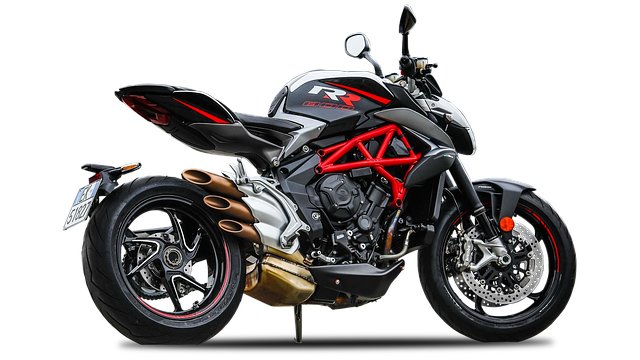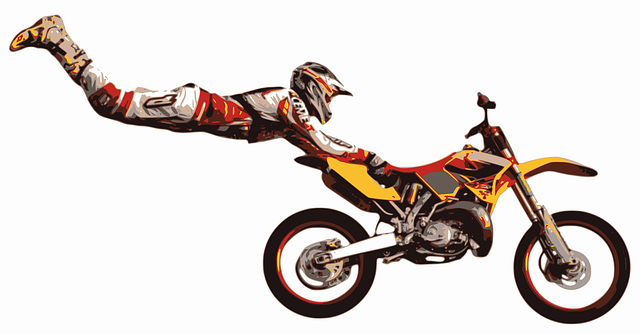To ensure your motorcycle battery stays healthy and lasts longer, it's essential to use a charger designed for your specific battery type (lead-acid, AGM, or Gel), adhere to the manufacturer's recommendations, and regularly clean terminals and check voltage levels. Monthly checks are crucial; ensure the battery is holding at around 12.6 volts when fully charged, keep it securely mounted, indoors, and away from extreme temperatures. For lead-acid batteries, maintain water levels to prevent sulfation. Avoid draining your battery completely and use a maintenance charger when not in use, especially during off-season months. Regular upkeep, including monthly voltage checks and terminal inspections, will help you avoid issues like overcharging or failure to hold a charge, thus maintaining consistent performance for your motorcycle rides.
When it comes to maintaining your motorcycle’s performance, ensuring your battery is fully charged and in optimal condition is paramount. This article provides a comprehensive guide on safely charging your motorcycle battery, covering everything from selecting the appropriate charger for your battery’s chemistry to understanding the do’s and don’ts of maintenance. With our step-by-step instructions, you’ll learn how to create a safe charging environment to prevent fire hazards and electrocution risks. We’ll also address common issues that may arise during charging and offer maintenance tips for extending your battery’s life. Keep your ride ready to go with the right knowledge on hand.
- Understanding Your Motorcycle Battery: Types and Maintenance
- Safe Charging Environment: Preventing Fire Hazards and Electrocution Risks
- Step-by-Step Guide to Safely Charging Your Motorcycle Battery
- Selecting the Right Charger for Your Motorcycle's Battery Chemistry
- Precautions to Take Before, During, and After Charging
- Troubleshooting Common Issues Encountered During Battery Charging
- Maintenance Tips for Optimal Battery Longevity and Performance
Understanding Your Motorcycle Battery: Types and Maintenance

When it comes to maintaining your motorcycle’s performance, understanding your motorcycle battery is paramount. Motorcycle batteries typically fall into two main categories: lead-acid and lithium-ion. Lead-acid batteries are the most traditional and widely used type due to their reliability and cost-effectiveness. They consist of six cells, each containing a lead plate submerged in sulfuric acid. Regular maintenance for a lead-acid battery includes checking the electrolyte level monthly and topping it off with distilled water if necessary, ensuring the battery terminals are clean and tight, and storing the motorcycle in a cool, dry place to prevent excessive discharge.
On the other hand, lithium-ion batteries are lighter and offer more power per weight, making them an excellent choice for modern motorcycles that require high energy output. These batteries do not contain liquid electrolytes; instead, they use a solid electrolyte material. For both types, regular charging is crucial to maintain the battery’s health. This involves a consistent charging routine after each ride, using a charger designed specifically for motorcycle batteries to avoid overcharging or damage. Additionally, monitoring the battery’s charge level and avoiding full discharges can extend its lifespan. Regular inspections for any signs of corrosion or wear on the terminals and cables should also be part of your maintenance routine, as these can impact the battery’s ability to hold a charge. By understanding the type of motorcycle battery you have and implementing a proactive maintenance schedule, you can ensure that your battery remains reliable and ready for your next ride.
Safe Charging Environment: Preventing Fire Hazards and Electrocution Risks

When charging your motorcycle battery, it is imperative to prioritize safety to prevent fire hazards and electrocution risks. The charging environment should be well-ventilated to dissipate any gases that may be released during the charging process, which can otherwise accumulate and ignite. Ensure that the area is dry to avoid electrical shorts; moisture can conduct electricity and create a dangerous situation. Select a flat surface away from flammable materials to place your motorcycle and battery charger. This not only minimizes the risk of fire but also ensures stability during the charging process, preventing accidental spills or damage to the equipment.
Additionally, use a battery charger that is compatible with your motorcycle’s battery type—whether it’s lead-acid, AGM, or lithium—to avoid overcharging or undercharging issues that can compromise the battery’s lifespan and safety. Always follow the manufacturer’s instructions for charging rates and durations, and never leave a charger unattended or connected to the battery longer than recommended. Regularly inspect the charger cables and connections for any signs of wear, corrosion, or damage that could lead to electrical failure or shocks. By adhering to these safety measures and using the correct equipment, you can safely charge your motorcycle battery and maintain its performance and reliability.
Step-by-Step Guide to Safely Charging Your Motorcycle Battery

Maintaining a fully charged battery is crucial for your motorcycle’s performance and longevity. When it comes to safely charging your motorcycle battery, following a step-by-step guide is essential. Begin by selecting the appropriate charger for your battery type; most modern motorcycle batteries are sealed lead acid (SLA) or absorbent glass mat (AGM) types, which require a maintenance charge that’s specifically designed for them. Before connecting the charger, ensure your motorcycle is off and the ignition key is removed to prevent any electrical interference.
Connect the charger to a grounded outlet and then to the battery terminals: the red clamp to the positive terminal and the black clamp to the negative terminal. It’s important to follow the manufacturer’s instructions for proper connection to avoid potential damage or injury. Once connected, set the charger to its recommended charge mode, typically labeled as “Charge” or “Maintenance.” During the charging process, periodically check the battery levels and temperature to ensure everything is functioning within normal ranges. If you notice any unusual sounds, smells, or visual cues like bloating or cracks in the battery case, disconnect the charger immediately and consult a professional. After the charging cycle is complete, allow the battery to rest for at least 12 hours before disconnecting the charger and starting your motorcycle. This resting period helps to stabilize the battery’s charge and ensures that it’s fully conditioned for use. Regularly following this process will help extend the life of your motorcycle battery and keep you safely on the road.
Selecting the Right Charger for Your Motorcycle's Battery Chemistry

When it comes to safely charging your motorcycle battery, selecting the correct charger is paramount. Not all chargers are created equal, and using an incompatible charger can damage your battery or lead to poor performance. Motorcycle batteries typically come in two main types: lead-acid and sealed lead-acid (AGM or Gel). Each type requires a specific type of charger to ensure optimal charging cycles and to prevent overcharging or undercharging, which can shorten the lifespan of your battery.
For lead-acid batteries, a charger with a fixed voltage is generally recommended, as these batteries are robust and can handle a consistent charge without the risk of being damaged. On the other hand, AGM (Absorbent Glass Mat) or Gel sealed batteries require a smart charger with varying voltage output to manage the charge level precisely. These modern batteries have thinner plates and a more sensitive chemistry that requires a charging system with microprocessor control to safely and efficiently replenish the power without causing overheating or gassing. When selecting your charger, always consider the battery’s chemistry and ensure compatibility for the safest and most effective charging process. It’s crucial to adhere to the manufacturer’s guidelines and select a charger that is designed specifically for motorcycle batteries to avoid any complications. Properly maintaining your motorcycle battery through the use of an appropriate charger not only extends its lifespan but also ensures consistent performance on the road.
Precautions to Take Before, During, and After Charging

When approaching the task of charging your motorcycle battery, adherence to safety precautions is paramount. Prior to initiating the charging process, ensure that the battery is clean and free from corrosion on the terminals. Inspect the charger for any signs of damage or fraying in the cables. The charging area should be well-ventilated to avoid the accumulation of gases that may emanate from the battery during charging, especially if it’s been sitting for a prolonged period.
During the charging process, never leave the charger unattended or connected to the battery for longer than recommended by the manufacturer’s guidelines. This can potentially lead to overcharging and damage to the battery. Keep flammable materials away from the charging setup to mitigate any risks of fire due to sparks or battery leakage. Additionally, ensure that the charger is compatible with your motorcycle battery’s chemistry; using an incorrect charger can cause irreversible harm to the battery. After charging, allow the battery to rest for a period as specified by the manufacturer before attempting to start your motorcycle. This period enables the battery to reach a safe temperature and stabilize its charge level. Regular monitoring of the battery’s condition post-charging will help you maintain optimal performance and longevity, ensuring your motorcycle remains ready for your next ride.
Troubleshooting Common Issues Encountered During Battery Charging

When charging a motorcycle battery, several common issues may arise that can disrupt the process and potentially damage the battery if not addressed properly. One frequent problem is a refusal of the battery to hold a charge. This could be indicative of sulfation, where sulfur crystals form on the lead plates, reducing their ability to store energy. To troubleshoot this, it’s important to ensure that the charging system is set to the correct amp setting suitable for your specific motorcycle battery model. Additionally, check for any signs of corrosion or loose connections on terminals, which can impede the charging process.
Another issue encountered during battery charging is overcharging. This happens when the charger delivers more current than the battery can accept, leading to potential gassing and heat buildup, which can shorten the battery’s lifespan or even cause an explosion. To prevent overcharging, use a quality, purpose-built motorcycle battery charger with automatic voltage detection features. Regularly inspect the charger for proper functioning and replace it if it shows any signs of wear or damage. Also, make sure to follow the manufacturer’s instructions regarding charge times and the state of the battery before initiating the charging process. Monitoring the charging process and addressing these issues promptly will help ensure your motorcycle battery remains in optimal condition and serves you reliably for years to come.
Maintenance Tips for Optimal Battery Longevity and Performance

Regular maintenance is key to prolonging the life of your motorcycle battery and ensuring it performs optimally. To begin with, check the charge level of your battery monthly. A multimeter can accurately measure the voltage, which should read around 12.6 volts when fully charged and resting. Ensure the battery terminals are clean and free from corrosion; this is crucial for a solid electrical connection and can prevent unnecessary strain on the battery. Additionally, keep the battery tightly secured in its mount to avoid movement that could damage internal cells.
Furthermore, consider the charging environment. Extreme temperatures can degrade battery performance. Store your motorcycle indoors, away from direct sunlight or harsh weather conditions. Regularly top off the water level in lead-acid batteries, as sulfation can form on the plates if the water level drops too low. Lastly, avoid draining the battery completely; doing so can reduce its capacity over time. Employ a battery tender or similar maintenance charger to keep the battery at an optimal state of charge when not in use. By following these tips, you can ensure your motorcycle battery delivers consistent performance for many riding seasons to come.
When it comes to maintaining your motorcycle’s peak performance, the health of your battery is paramount. Our comprehensive guide has illuminated the essential aspects of understanding your motorcycle battery’s types and maintenance needs, ensuring you create a safe charging environment to prevent fire hazards and electrocution risks. With the step-by-step instructions provided, you’re now equipped to select and use the appropriate charger for your motorcycle battery’s specific chemistry. Remember to adhere to all precautions before, during, and after the charging process, and be prepared to troubleshoot common issues that may arise. By implementing these tips consistently, you’ll not only safeguard your bike’s battery but also extend its lifespan and ensure reliable operation for countless rides ahead. Keep these motorcycle battery safety and maintenance practices at the forefront of your vehicle care routine.
